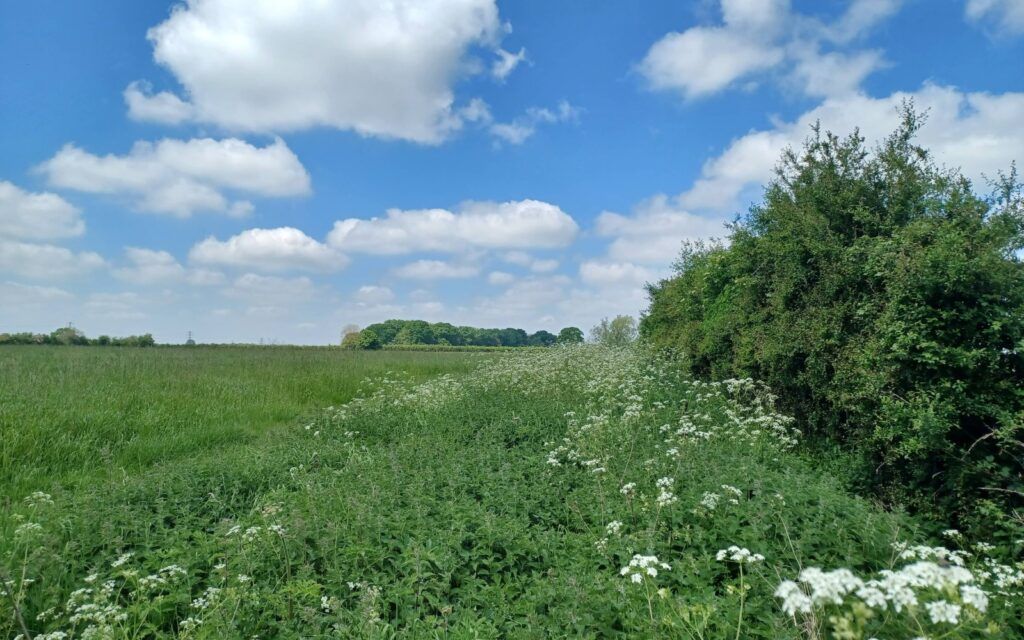New applications for the Sustainable Farming Initiatives (SFIs) have been suspended with no warning. A Defra press release optimistically framed this as ‘having reached its completion’ as the budget had been ‘successfully allocated’. There will be a reset and a new scheme will be announced in summer this year. But what does this mean in practice?
The SFIs were billed as money for public goods and a means to provide finance for farms when Basic Payments Scheme are scaled back and ultimately stopped. But let’s be clear, the money in the SFIs were not subsidies in the same way; they were payments for actions which help us fight the biodiversity and climate crises. Not money paid out on an acreage basis, but to do things that stored carbon, protected air, water and soil, and restore biodiversity. For hedgerows, it supported sympathetic trimming regimens, the establishment of new hedgerow trees and an assessment to help farmers take stock of hedge condition, getting a better grip on the restoration tasks we have ahead of us.

For many farms, the removal of the SFIs will mean a gap where no public money is accessible for these actions and, consequently, the government has no power to support their journey towards a more sustainable farming future.
From the perspective of someone working in a wildlife conservation charity – sustainable, nature friendly farming is certainly far from ‘complete’. Farming relies on wildlife, yet it’s widely recognised that private markets haven’t, and may never, do enough to protect it, despite wildlife improving farm resilience and profitability. Because of this, the financing of these activities, many of which provide public goods, has to come from public money.
The original Defra ambition was to have 70% of farms in the SFIs by 2028, but we managed less than half of this before the budget was spent. This demonstrates that we clearly need a bigger budget for wildlife friendly farming, and perhaps also a refined system for allocating it.
Early indications show that it is the latter point that is Defra’s focus. We’ve already had confirmation that larger landholders and farmers may not have the same access to the next scheme that they did for SFIs. And whilst this would make sense if this money was ‘support’, it doesn’t when you understand that it’s actually delivering on the ground conservation action, helping us progress towards our national climate change and biodiversity goals.
My hope for the next scheme, due to be outlined this summer, is that it doesn’t reinvent the wheel. Eight years of work went into developing the current SFIs, and, whilst it wasn’t perfect, it was a huge step in the right direction. I hope that whatever comes next builds on this work rather than overhauling it.
The wider context
This is not the only financial blow farmers are facing. Not just the changes to inheritance tax relief, and a supply chain and trade system working against them, and we still haven’t yet seen the full return of the Capital Grants.
Whilst the backlog of Capital Grants is now being addressed, albeit with new financial caps on works, farmers still can’t apply for new capital grants. Some of these such as hedgelaying, are among of the most important actions for long term wildlife conservation we can be doing in our farmland. Whilst not cheap, hedgelaying provides excellent value for public money, and is certainly cheaper than the long-term alternative which is that of continual hedge loss and re-planting. What’s more, whilst the grants for hedgelaying are good, in some cases they don’t fully cover the costs incurred, meaning farmers can actually be subsidising this conservation work from their own pockets.
Final words
Whilst perhaps a few more checks and caps could ensure that the money available was more fairly distributed or spent in the most efficient manner. It’s a shame that this couldn’t have been revised without the whole system being shut down.
We should be celebrating the fact that farmers are so eager to take up actions for the climate and biodiversity, and should respond by increasing the pot rather than taking it away. Making the most of the ambition, drive and efficiency of farmers to help restore our wildlife is critical; we can’t afford to lose their support and momentum now.
Written by Megan Gimber, PTES Key Habitats Officer
